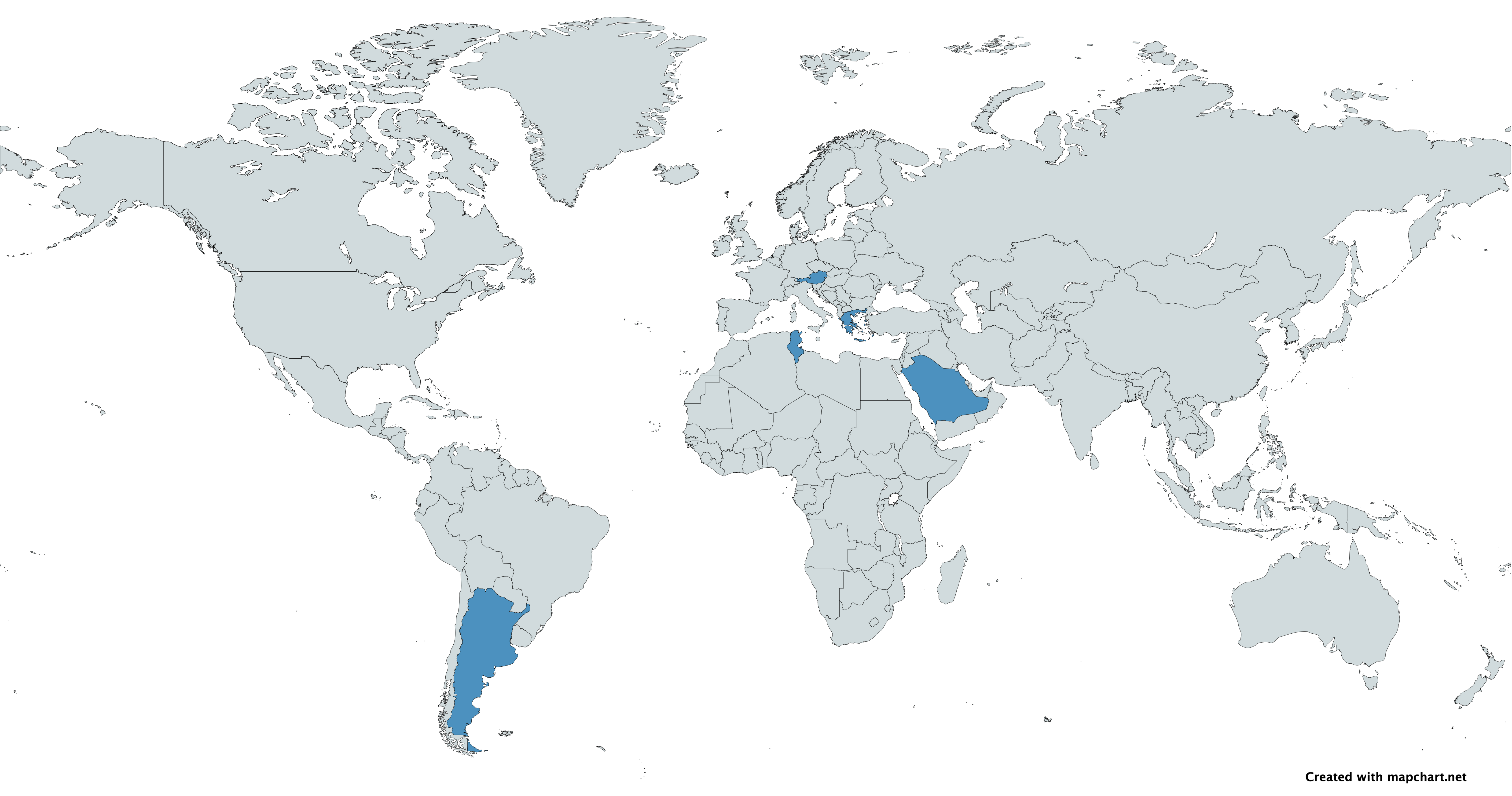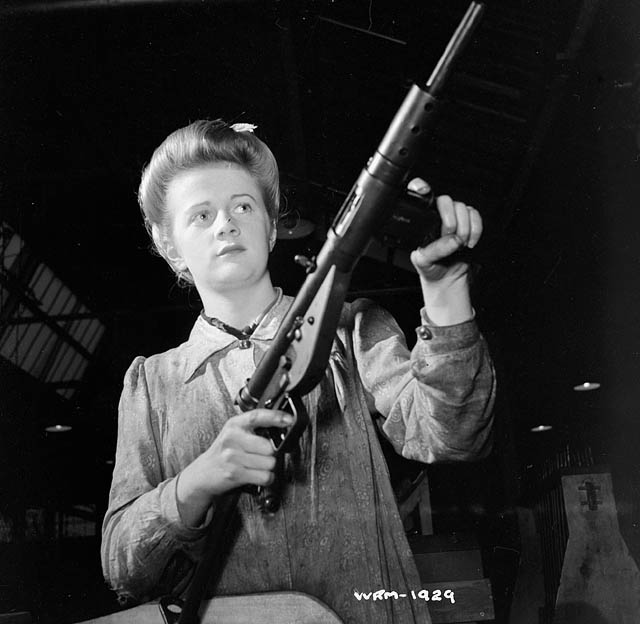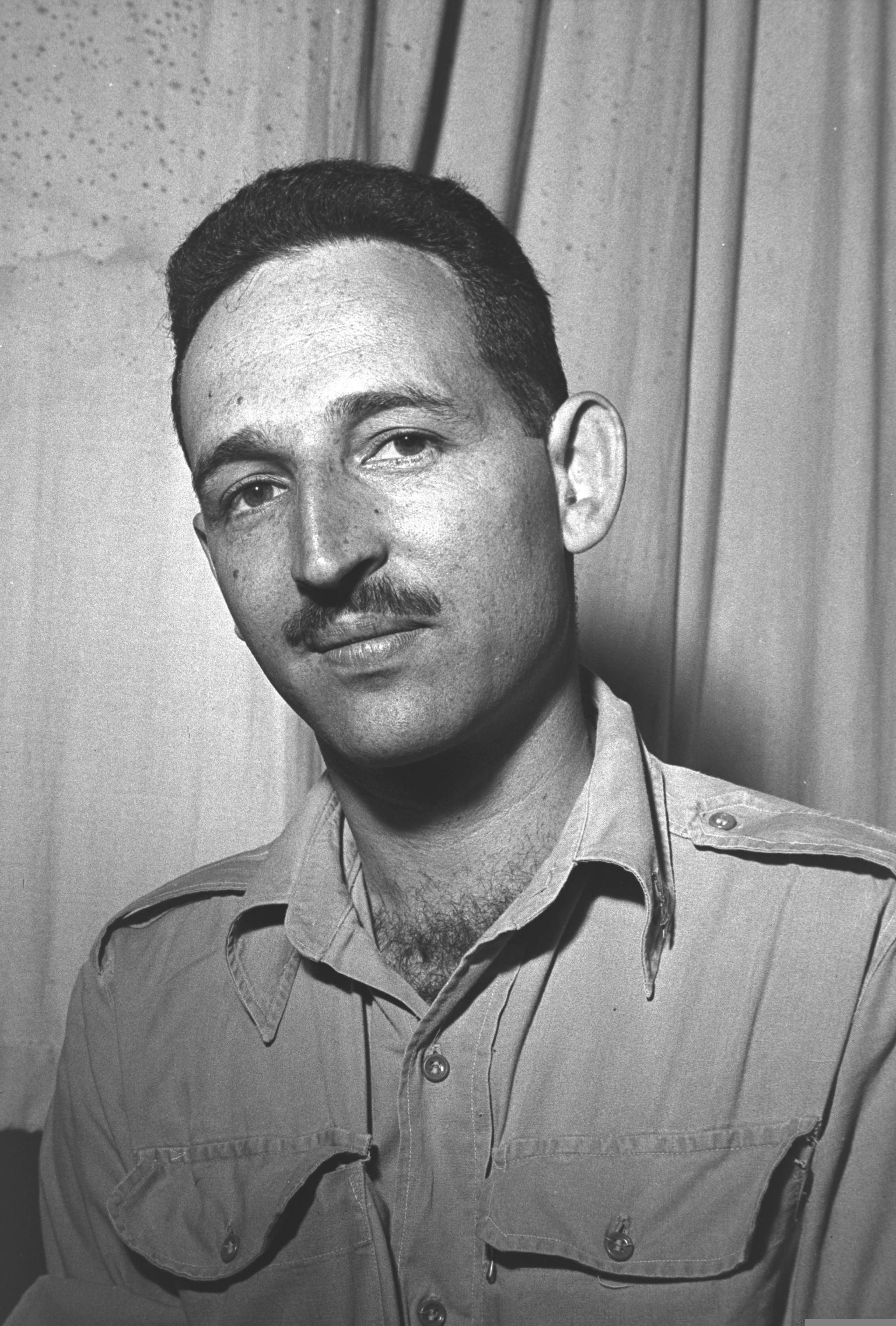|
Telescoping Bolt
A telescoping bolt (also known as an overhung bolt) is a firearm bolt which telescopes over, that is, wraps around and past, the breech end of the barrel. This feature reduces the required length of a weapon such as a submachine gun significantly, and it allows compact designs to be balanced around the pistol grip in a way that gives "pointability" more like a pistol's. While it would be simpler and easier to shorten the bolt to fit completely behind the breech, the bolt must have a certain amount of mass in order to operate reliably with a given caliber. The telescoping bolt moves some of that mass forward of the bolt face, resulting in a bolt which may be longer overall, but is shorter behind the bolt face. Though technically a different, distinct concept, nearly all telescoping bolt submachine guns use a magazine A magazine is a periodical literature, periodical publication, print or digital, produced on a regular schedule, that contains any of a variety of subject- ... [...More Info...] [...Related Items...] OR: [Wikipedia] [Google] [Baidu] |
Armaguerra OG-43
The Armaguerra OG-43 (Armaguerra Mitra Oliani Giovanni) and its subsequent version, OG-44, were submachine guns manufactured in small numbers in the Republic of Salo. Origins and development The OG-43, designed by Giovanni Oliani in the factory based in Cremona named Società Anonima Revelli Manifattura Armiguerra, was an advanced submachine gun, designed for compactness and ease of mass production. It is part of a family of weapons produced under emergency measures during the time of the Italian Social Republic, which include the TZ-45 machine gun, FNAB-43 and Isotta Fraschini Isotta Fraschini () is an Italian luxury car manufacturer, also producing trucks, as well as engines for marine and aviation use. Founded in Milan, Italy, in 1900 by Cesare Isotta and the brothers Vincenzo, Antonio, and Oreste Fraschini, in 195 .... The next version, the OG-44, instead had a more traditional shape. The Ministry of War of the RSI had approved the construction, but it was never ini ... [...More Info...] [...Related Items...] OR: [Wikipedia] [Google] [Baidu] |
Steyr MPi 69
The Steyr MPi 69 is a 9×19mm submachine gun of the late 20th century made by the Austrian firm Steyr. Characteristics The MPi 69 is shaped much like other telescoping bolt submachineguns, such as the MAC 10 or Uzi. It has a vertical pistol handgrip into which the magazine is inserted, and a longer horizontal front grip area; it also has a folding stock. Featuring a design unusual among modern submachine guns, the MPi 69 is cocked by a dual-purpose lever also used as the front sling attachment point. The forward handgrip and vertical pistol handgrip are all one large plastic molding, forming the front and center bottom part of the weapon. The receiver proper is a square metal tube which partly nestles inside the plastic handgrip. Production status In 1990, the MPi 81 was replaced by the TMP in the product line, though the TMP was also discontinued by Steyr, which sold the design to Brügger & Thomet; it was subsequently improved as the Brügger & Thomet MP9. Variants MPi 8 ... [...More Info...] [...Related Items...] OR: [Wikipedia] [Google] [Baidu] |
Patria Submachine Gun
The Military Armament Corporation Model 10, officially abbreviated as "M10" or "M-10", and more commonly known as the MAC-10, is a compact, blowback operated machine pistol/submachine gun that was developed by Gordon Ingram in 1964. It is chambered in either .45 ACP or 9mm. A two-stage suppressor by Sionics was designed for the MAC-10, which not only abates the noise created but makes it easier to control on full automatic (although it also makes the gun far less compact and concealable). Military Armament Corporation never used the "MAC-10" nomenclature in its catalogues or sales literature, but "MAC-10" is frequently used by Title II dealers, gun writers, and collectors. For a decade, the semi-automatic pistol version of the weapon was forbidden in the U.S. under the assault weapons ban enacted by Congress in 1994. Design The MAC-10 is built predominantly from steel stampings. A notched cocking handle protrudes from the top of the receiver, and turning the handle 90°, loc ... [...More Info...] [...Related Items...] OR: [Wikipedia] [Google] [Baidu] |
MAC-10
The Military Armament Corporation Model 10, officially abbreviated as "M10" or "M-10", and more commonly known as the MAC-10, is a compact, Blowback (arms), blowback operated machine pistol/submachine gun that was developed by Gordon Ingram in 1964. It is chambered in either .45 ACP or 9×19mm Parabellum, 9mm. A two-stage suppressor by Sionics was designed for the MAC-10, which not only abates the noise created but makes it easier to control on full automatic (although it also makes the gun far less compact and concealable). Military Armament Corporation never used the "MAC-10" nomenclature in its catalogues or sales literature, but "MAC-10" is frequently used by Title II weapons, Title II dealers, gun writers, and collectors. For a decade, the semi-automatic pistol version of the weapon was forbidden in the U.S. under the assault weapons ban enacted by Congress in 1994. Design The MAC-10 is built predominantly from steel stampings. A notched cocking handle protrudes from the t ... [...More Info...] [...Related Items...] OR: [Wikipedia] [Google] [Baidu] |
MGP-15 Submachine Gun
The MGP-15 is a submachine gun designed for issue to special forces made by SIMA-CEFAR, updated with a longer barrel and other features. The name was changed from previous MGP models due to modifications, including a change to a barrel with a threaded muzzle, usually fitted with a screwed-on muzzle cap, that allows a suppressor to be quickly screwed on. Design Like all MGP submachine guns, the weapon can utilize Uzi submachine gun magazines.Hogg, page 207. A folding butt stock is provided, so arranged that with the butt folded along the right-hand side of the receiver the butt plate can act as a form of foregrip. Variants * MGP-84 : An upgraded version of the MGP-15. Used in close protection duties. * MGP-14 : A semi-automatic version of the MGP-84, which has a folding forward grip. Also known as the MGP-14 Micro or as the MGP-14 Pistol. For a time, it was known as the MGP-84C. References Bibliography * See also * MGP submachine gun The Peruvian MGP series is a family ... [...More Info...] [...Related Items...] OR: [Wikipedia] [Google] [Baidu] |
SM-9
The STEN (or Sten gun) is a British submachine gun chambered in 9×19mm which was used extensively by British and Commonwealth forces throughout World War II and during the Korean War. The Sten paired a simple design with a low production cost, facilitating mass production to meet the demand for submachine guns. As well as equipping regular units, the Sten was distributed to resistance groups within occupied Europe. Its simple design made it an effective insurgency weapon for resistance groups. The Sten is a select fire, blowback-operated weapon with a side-mounted magazine. Sten is an acronym, derived from the names of the weapon's chief designers: Major Reginald V. Shepherd and Harold J. Turpin, and "En" for the Enfield factory. Around four million Stens in various versions were made in the 1940s, making it the second most produced submachine gun of the Second World War, after the Soviet PPSh-41. The Sten served as the basis for the Sterling submachine gun, which replace ... [...More Info...] [...Related Items...] OR: [Wikipedia] [Google] [Baidu] |
MP-40
The MP 40 () is a submachine gun chambered for the 9×19mm Parabellum cartridge. Developed in Nazi Germany, it saw extensive service in the Axis forces during World War II. Designed in 1938 by Heinrich Vollmer with inspiration from its predecessor the , it was heavily used by infantrymen (particularly by platoon- and squad-leaders), and by paratroopers, on the Eastern and Western Fronts as well as by the crews of armoured fighting vehicles. Its advanced and modern features made it a favorite among soldiers and popular in countries from various parts of the world after the war. The Allies often referred to the MP 40 as the "Schmeisser", after the firearms-designer Hugo Schmeisser (1884-1953). In 1917 Schmeisser had designed the MP 18, which was the first mass-produced submachine gun. He did not, however, have anything to do with the design or development of the MP 40, although he held a patent on the magazine. The MP 40's variants included the MP 40/I and the MP 41. Erm ... [...More Info...] [...Related Items...] OR: [Wikipedia] [Google] [Baidu] |
Recoil
Recoil (often called knockback, kickback or simply kick) is the rearward thrust generated when a gun is being discharged. In technical terms, the recoil is a result of conservation of momentum, for according to Newton's third law the force required to accelerate something will evoke an equal but opposite reactional force, which means the forward momentum gained by the projectile and exhaust gases (ejectae) will be mathematically balanced out by an equal and opposite momentum exerted back upon the gun. Basics Any launching system (weapon or not) generates recoil. However recoil only constitutes a problem in the field of artillery and firearms due to the magnitude of the forces at play. Gun chamber pressures and projectile acceleration forces are tremendous, on the order of tens to hundreds mega pascalAs a perspective, the atmospheric pressure is roughly 0.1 megapascal. and tens of thousands of times the acceleration of gravity ( g's), both necessary to launch the projectile a ... [...More Info...] [...Related Items...] OR: [Wikipedia] [Google] [Baidu] |
Uziel Gal
Uziel "Uzi" Gal (, born Gotthard Glas; 15 December 1923 – 7 September 2002) was a German-born Israeli firearm designer who invented and became the eponym of the Uzi submachine gun. Biography Gal was born in Weimar, Germany to Miele and Erich Glas. When the Nazis came to power in 1933, he first moved to the United Kingdom and later in 1936 to Kibbutz Yagur in the British Mandate of Palestine, where he changed his name to Uziel Gal. In 1943, he was arrested for illegally carrying a gun and was sentenced to six years in prison. However, he was pardoned and released in 1946 (serving less than half of his sentence). Gal began designing the Uzi submachine gun shortly after the founding of Israel and the 1948 Arab–Israeli War. In 1951, it was officially adopted by the Israel Defense Forces and was called the Uzi after its creator. The submachine gun was based on the Czechoslovak ZK 476, designed by Josef Koucký. Gal did not want the weapon to be named after him but his ... [...More Info...] [...Related Items...] OR: [Wikipedia] [Google] [Baidu] |
Uzi Submachine Gun
The Uzi (; ; officially cased as UZI) is a family of Israeli open-bolt, blowback-operated submachine guns and machine pistols first designed by Major Uziel "Uzi" Gal in the late 1940s, shortly after the establishment of the State of Israel. It is one of the first weapons to incorporate a telescoping bolt design, which allows the magazine to be housed in the pistol grip for a shorter weapon. The Uzi prototype was finished in 1950. It was first introduced to Israel Defense Forces (IDF) special forces in 1954, and the weapon was placed into general issue two years later. The IDF supplied Uzis to rear-echelon troops, officers, artillery troops and tank crews, as well as a frontline weapon by elite light infantry assault forces. The Uzi has been exported to over 90 countries. Over its service lifetime, it has been manufactured by Israel Military Industries, FN Herstal, and other manufacturers. From the 1960s through to the 1980s, more Uzi submachine guns were sold to more militar ... [...More Info...] [...Related Items...] OR: [Wikipedia] [Google] [Baidu] |
CZ Model 25
The CZ Model 23/25 (properly, Sa 23/25 or Sa vz. 48b/samopal vz. 48b – ''samopal vzor 48 výsadkový'', "submachine gun model year 1948 para") was a series of Czechoslovak designed submachine guns introduced in 1948. There were four generally very similar submachine guns in this series: the Sa 23, Sa 24, Sa 25, and Sa 26. The primary designer was Jaroslav Holeček (15 September, 1923–12 October 1997), chief engineer of the Česká zbrojovka Uherský Brod arms factory. Design The Sa 23 series utilize a straightforward blowback action, with no locked breech, and fire from the open bolt position. They also use a progressive trigger for selecting between semi-automatic fire and fully automatic fire. Lightly pulling on the trigger will fire a single shot. Pulling the trigger farther to the rear in a continuous motion will fire fully automatically, until the trigger is released or the magazine is empty. The Sa 23 series were submachine guns with a telescoping bolt, in w ... [...More Info...] [...Related Items...] OR: [Wikipedia] [Google] [Baidu] |




